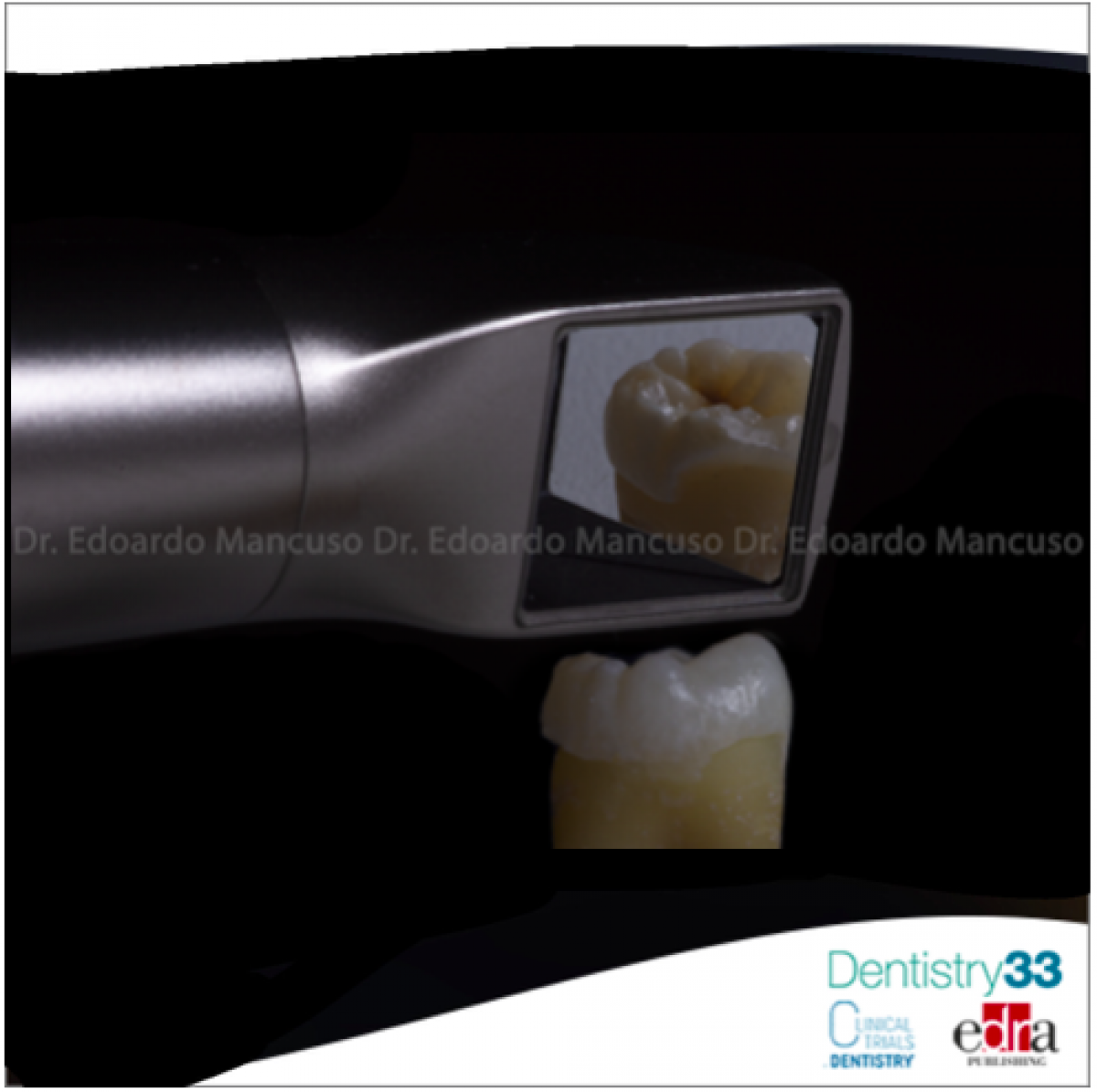
Scanning Under the Dental Dam Isolation.
Edoardo Mancuso
Digital systems are becoming tools used by many dentists and they have been successfully integrated into clinical dentistry. It has already been proved that digital scanning techniques are a clinically acceptable alternative to conventional impressions for unitary and short-span teeth and implant-supported fixed prostheses.
However, several clinical factors such as moisture, saliva, blood, and optics’ fogging may cause excessive light reflection that may reduce the quality and sharpness of the captured image. Moreover, tongue and soft tissue movement may wet the scanning surface reducing in this way the scan quality.
An interesting article written by Dr. Lucas Caponi and his team has proposed a technique that could help to ease the process of digital scansion helping indeed in the control of many scan distortion factors, such as moisture and saliva.
The technique proposed consists to effectuate the impression with the dental dam placed on the prepared teeth for the indirect restoration.
Technique
The article continues with a detailed step by step guide of the procedure that is herein reported:
1) Scansion of the arch to be treated and the antagonist dentition using an intraoral scanner.
2) Scansion of the intermaxillary relationship in the desired treatment position.
3) Placing of the dental dam on the teeth to be treated (the authors advise extending the isolation to at least 2 to 3 more teeth from those that require dental preparation).
4) Realization of tooth build-up if needed, dental preparation, and immediate dentine sealing under dental dam isolation.
5) Duplication of the arch’s scan data to be treated and trimming of the tooth area to be prepared. It is recommended in the article to extend the trimmed area only to the adjacent teeth contact points to guarantee more reference surface for matching the next scan
6) Intraoral scansion of the prepared teeth filling the previously trimmed scan. Available space for restoration can be checked with the scanner’s space evaluation tool.
7) Exportation of all scans aligned to the same XYZ spatial coordinates in STL files and manufacture realization with CAD software and a CAM milling machine.
Discussion and Conclusion
The authors assess that scanning with the dental dam in place allows an outmost control of some distortion factors, such as the presence of saliva and blood. The dam also minimizes the interruption of the scanner’s stitching process caused by tongue or soft tissue movement, resulting in quicker and higher-quality scans. Then, scanning under dental dam isolation may shorten the operative time and maximize preparation margins’ visibility, providing a stress-free environment.
In the article also a limiting factor is noted: the necessity for this technique, of a supragingival preparation margin for all of the restorations scanned.
The dental dam isolation is a necessary step in most of adhesive dentistry procedures, so maintaining it when restorative treatment is finished while making the digital scan may be beneficial for scanning accuracy and time efficiency.
For additional information: Protocol for Indirect Restoration Intraoral Scanning Under Dental Dam Isolation: A Dental Technique
 Related articles
Related articles
Prosthodontics 08 March 2024
Comparison of different intraoral scanning strategies for inlay restorations
Since the introduction of intra-oral scanners (IOSs), various scanning strategies have been proposed
Oral Hygiene & Prevention 11 July 2023
Are rotary instruments potential reservoirs of infectious agents?
Rotary cutting instruments have a complex surface, due to the presence of indentations and irregularities, a morphology that favors the retention of debris and bacteria. Therefore, the proper...
Digital Dentistry 07 July 2023
By Lorenzo Breschi and Carlo D’Alessandro
The aesthetic outcome of dental treatments relies heavily on the natural integration of prosthetic restorations with the surrounding periodontal or peri-implant soft tissue.
The position of dental implants is generally verified through imaging exams, even though its use exposes patients to radiation. Using polyurethane jaw models, the purpose of this in-vitro study was...
The collaboration marks a new era in digital dentistry and intraoral scanning and will enable dentists, laboratories, trainers and mentors to seamlessly collaborate in real-time.
 Read more
Read more
Much like EMTs rushing to the scene after an accident, stem cells hurry to the site of a skull fracture to start mending the damage. A new finding has uncovered the signaling mechanism that triggers...
Products 05 November 2025
SimplyTest has launched a groundbreaking saliva-based test to detect high-risk strains of oral human papillomavirus (HPV), a major cause of oropharyngeal cancers.
News 05 November 2025
Perimetrics, Inc., a dental technology company pioneering quantitative diagnostics, announced today that the U.S. Food and Drug Administration (FDA) has granted clearance for the InnerView...
News 05 November 2025
On October 15, open enrollment for Medicare began nationwide. Hundreds of thousands of seniors in New Jersey will once again face the challenge of finding the right Medicare coverage, including the...
Digital Dentistry 04 November 2025
Digitalisation is an expanding field in dentistry and implementation of digital teaching methods in dental education is an essential part of modern education.















